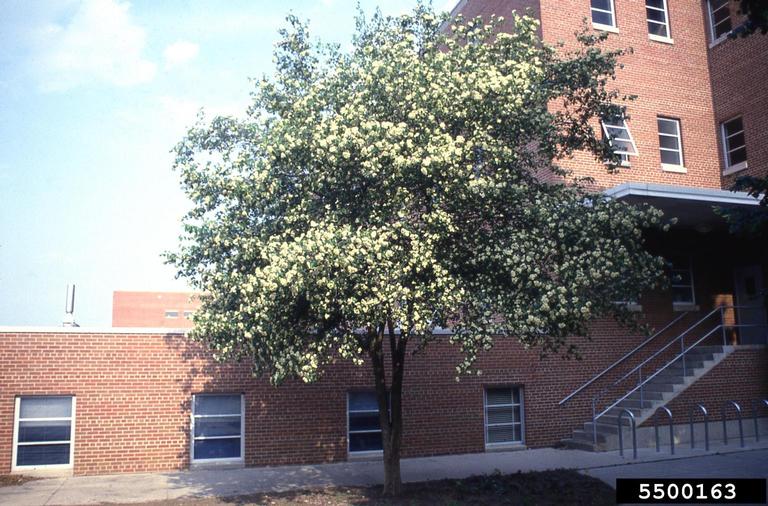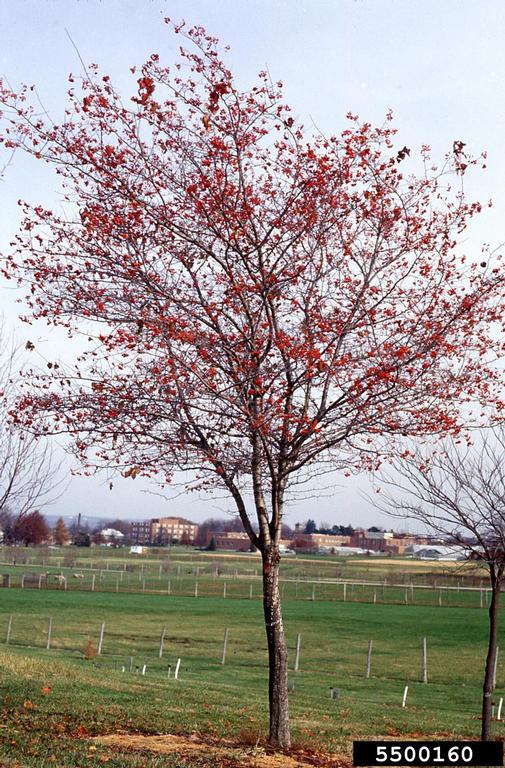
T. Davis Sydnor, The Ohio State University, Bugwood.org
Scientific Name: Crataegus phaenopyrum
Native to: East Central U.S. (southern Illinois, Kentucky, Tennessee and southeastern Missouri)
Mature Height*: 20 to 30 feet
Spread*: 20 to 30 feet
Form: upright oval to rounded vase shape; has 1 to 3-inch thorns (some cultivars have fewer thorns)
Growth Rate*: slow-moderate
Foliage: alternate, simple, triangular-shaped, three to five-lobed, doubly serrate margin and dark green in summer
Fall Color: orange to red to purple
Flowers: many-flowered, broad, flat-topped white clusters and typically appear in June
Fruit: globular, bright glossy red color, one-third inch in size, colorful through December then fade and are eaten by birds and small mammals
Bark: silvery-gray color; narrow thin and rectilinear scales become apparent with age
Site Requirements: transplant B&B or bare root in spring; plant in full sun and well-drained soil; tolerates drought fairly well
Hardiness Zone: zones four to eight
Insect & Disease Problems: borers, lacebugs, fireblight and cedar-quince rust; pruning in winter is best

T. Davis Sydnor, The Ohio State University, Bugwood.org
Suggested Applications: downtown city sites (tolerant of most urban conditions except for salt); avoid planting near high pedestrian traffic areas due to sharp, dangerous thorns or plant a cultivar that is almost thornless such as Princeton Sentry
Limitations: due to low branching habit, the tree must be set back sufficiently from roads or intersections for safe views and to prevent limb damage from vehicles; heavy snow may cause splitting and breakage of limbs due to tight branch angles
Comments: single-trunk form is preferred on wide boulevards and median strips, with the more natural multi-trunked form better for parklands
*Urban tree size and growth rate vary considerably and are strongly controlled by site conditions.
(This is an updated version of an article written by DNR Urban Forestry Coordinator Don Kissinger for the urban forestry newsletter in 1997.)
